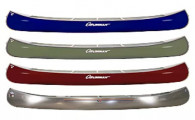Kayaks and paddleboards may have been on a tear in recent years, but it will take more than a few decades of continued popularity for them to replace tandem canoes as the classic paddlecraft in popular imagination. Two people paddling a canoe as it glides effortlessly across the water remains a timeless image. Canoe design does not change dramatically from year to year, and many of the shapes remain similar across decades.
That being said, innovation in materials is ongoing, and the sheer number of canoe companies trying to outdo each other makes the search for the best two-person canoe an enduring challenge. We have tips and recommendations here for getting started on your search.
Top picks: Best double canoes for 2024
The following tandem canoes have received the highest star ratings by reviewers in our Paddling Buyer’s Guide. See and review all two-person canoes here.
Best Tandem Canoes
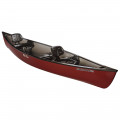
Saranac 146
Shop two-person canoes
The Paddling Buyer’s Guide has a comprehensive collection of every two-person canoe on the market. Follow the links below to begin exploring. The guide contains essential information including specs, prices, reviews and places to buy tandem canoes.
Shop by type
Shop by size
Shop by material
Shop by store
Shopping for a used two-person canoe?
The most important piece of advice for buying a canoe, new or used, is to understand why you want to buy it. When shopping for used tandem canoes, it may be tempting to spring for a deal on a cheap boat, but if it does not match your intended style of paddling, you may end up shopping again soon.
Don’t get caught pinching pennies on a flat-bottomed plastic canoe if you are planning on long portaging trips. On the other hand, if all you really need is a tandem canoe for your local lake, an 18-foot expedition-ready canoe may be above and beyond your needs.
Tandems are the standard canoes most outfitters rent out. Often, they sell off rental canoes at the end of each season. Renting one for a day or short trip is a great way to test the boat in a real setting before you buy it.
Used tandem canoes are sold privately through online classifieds such as Craigslist, Facebook Marketplace or Kijiji. Outdoor-specific boards like MEC Gearswap are also good for higher-end equipment.
Thoroughly inspect the canoe when looking at it. Some scrapes and abrasions are inevitable but check for any major damage requiring repairs. If you are confident in your repair skills, you may be able to get a good deal on a used tandem canoe.
A main determinant of a used canoe’s condition will be how it was stored. Ideally, a canoe stored in a garage will have been protected from damaging UV rays. If the canoe was left in a backyard with a tarp directly covering it, there may be moisture trapped inside, rotting wooden parts of the boat. This damage is not always easy to see so be sure to inquire about the storage and check for things like sun damage and mold or rot.
For more tips on what to look for when selecting a used canoe, read our article How To Buy A Used Canoe.
Tandem canoe buying guide
A tandem canoe is a significant purchase, and it is important to carefully weigh the different options when trying to find the best two-person canoe for you. Determining how you intend to use the canoe is important, and aspects of a canoe’s design will reflect its best uses. The canoe’s material will have implications for the performance, but also the weight and price.
Use
The first step in buying a tandem canoe is determining what type of canoeing you would like to do. This will help guide the buying process and narrow down the flotilla of appropriate boats. Also consider if you will always have a paddling partner, or if the canoe will be sometimes paddled solo. Symmetrical tandem boats can often be paddled solo, with the paddler sitting or kneeling at the bow seat, facing the stern and paddling stern-first.
Design
There are many different design factors to consider when buying a tandem canoe. Canoes are designed for different uses, and the shape, length and material will all play a part in a canoe’s performance.
The shape of the canoe will dictate how it handles while on the water. Some important things to consider are the rocker and hull profile. Rocker is the end-to-end curve of the canoe. A tandem canoe with lots of rocker will have upturned ends. It will turn and pivot exceptionally well, as less of the boat’s length is engaging the water (expressed another way, it has a shorter waterline).
A canoe with lots of rocker is best on rivers where quick maneuverability is important. A boat with a flat keel line, and little rocker, will track much better and is suited for lake travel, where the goal is to cover lots of distance, usually in a straight line.
Other important design features to consider when planning to buy a canoe include width and hull shape. These will determine how stable the canoe will feel. Generally, a wider canoe will feel more stable, and a narrower canoe will be faster. Beyond width, the cross-section shape of the hull further dictates the canoe’s stability, with a flat-bottomed hull having a high level of initial stability at the expense of speed and rough-water handling.
Flat-bottomed canoes are typically labeled as recreation or angling canoes. Shallow-arch hulls are faster and perform better in rougher water, while maintaining some initial stability. These are better all-around performers for canoe tripping.
Find more information about canoe design here.
Material
A tandem canoe’s material will affect its price, weight and performance. There are always tradeoffs. Canoes constructed from plastic or aluminum will be the cheapest, but also quite durable.
Specialized plastic laminates such as Esquif’s T-Formex or Novacraft’s SP3 are able to withstand heavy use and impacts.
Fiberglass canoes are a good compromise, offering a degree of durability without the weight of plastic canoes. They are priced in the middle, notably less expensive than ultralight canoes.
Lightweight canoes are made of carbon or Kevlar blends, and although costly, they are extremely easy to transport. They are not nearly as durable as other canoes and as such, are best in flatwater environments.
Wood canvas canoes are worth mentioning as well. These traditional canoes are aesthetically pleasing, and the natural characteristics of wood create a warm, tactile appeal. They require lots of care, but their owners are often passionate enough that the maintenance becomes part of the experience.
Want to know more? Find our answers to common questions about tandem canoes below.
-
What is a tandem canoe
When people ask, “what is a double canoe?” they are asking about a tandem or two-person canoe. These canoes are the most common type used for recreational paddling. Put plainly, a tandem canoe is a canoe designed to be paddled by two people; one sits in the front, or bow, and the other in the back, or stern.
-
2-person canoe length
The length of a tandem canoe will vary depending on the intended use of the boat. Most 2-person touring canoes will be at least 16 feet long. This is a good length for double canoes that will be used on rivers or for short overnight trips. If it is a symmetrical design like a Prospector, then a 16-foot tandem could be paddled solo by turning to face the stern from the bow seat and paddling the canoe stern-first.
Shorter double canoes measure 14-15 feet and are best used for whitewater or day trips where the extra cargo capacity is not needed. Longer canoes suited for lake travel and extended wilderness trips extend to 17 or 18 feet.
-
2-person canoe weight limit
The weight limit, or capacity, of a tandem canoe is dependent on the shape and length of the canoe. Each canoe will have a different capacity. Remember that this number refers to not only the combined weight of the paddlers, but also the total gear payload as well. This information can be found under the specifications on the manufacturer’s site or in our Paddling Buyer’s Guide.
2-person canoe reviews
Reviews are an excellent online resource to help guide the search for the best tandem canoe. Read what others loved (or didn’t) about a boat and see if they align with your intended paddling style. Remember that different people will have different opinions; read them while keeping in mind the type of paddling you will do.
Coming soon



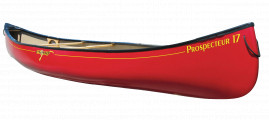
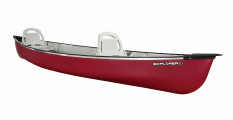
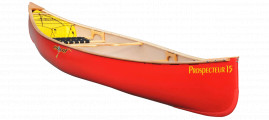
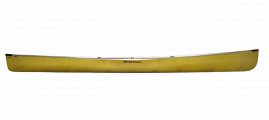
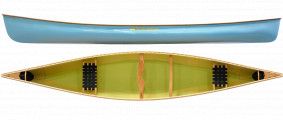

-first_product_boats.jpg)

